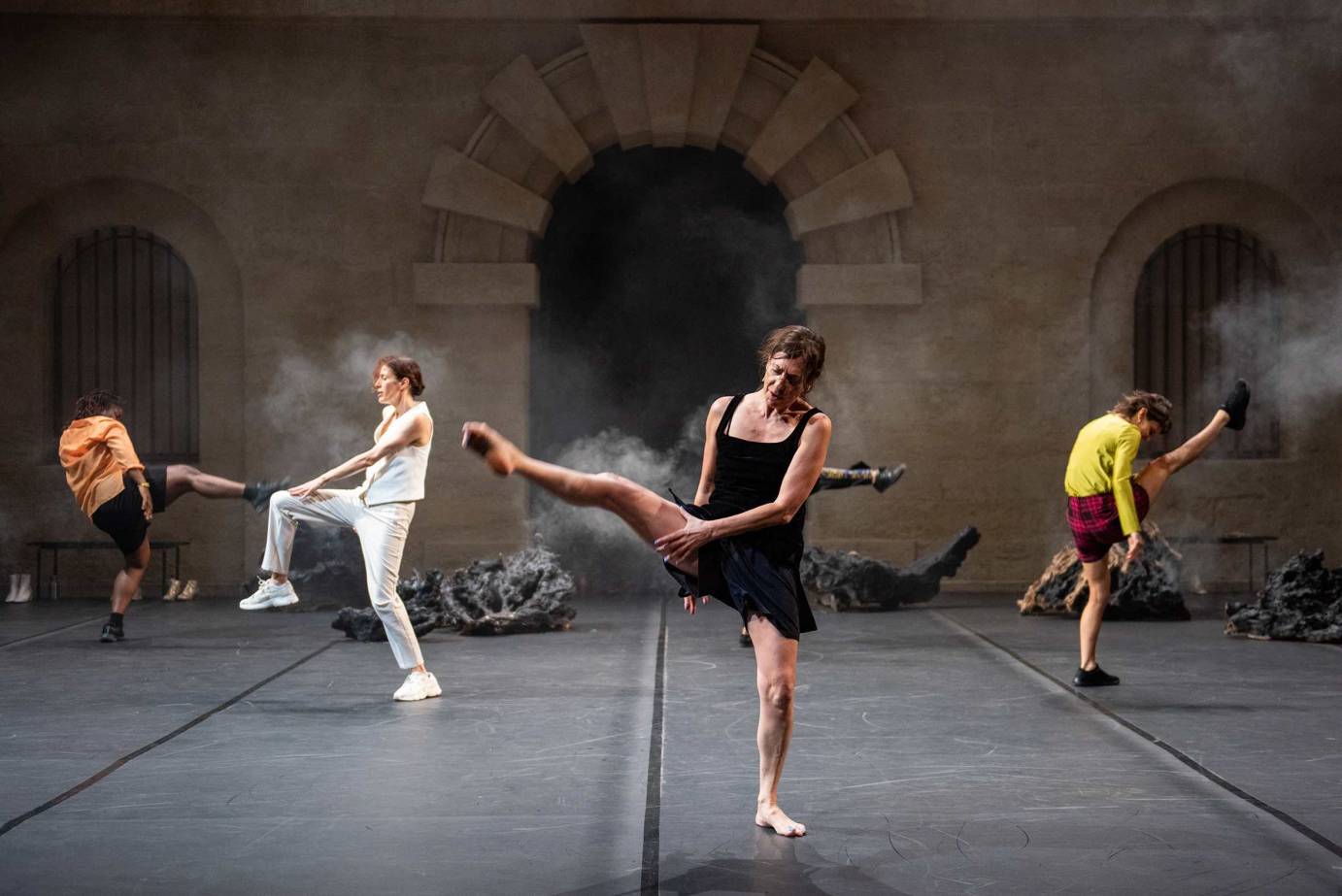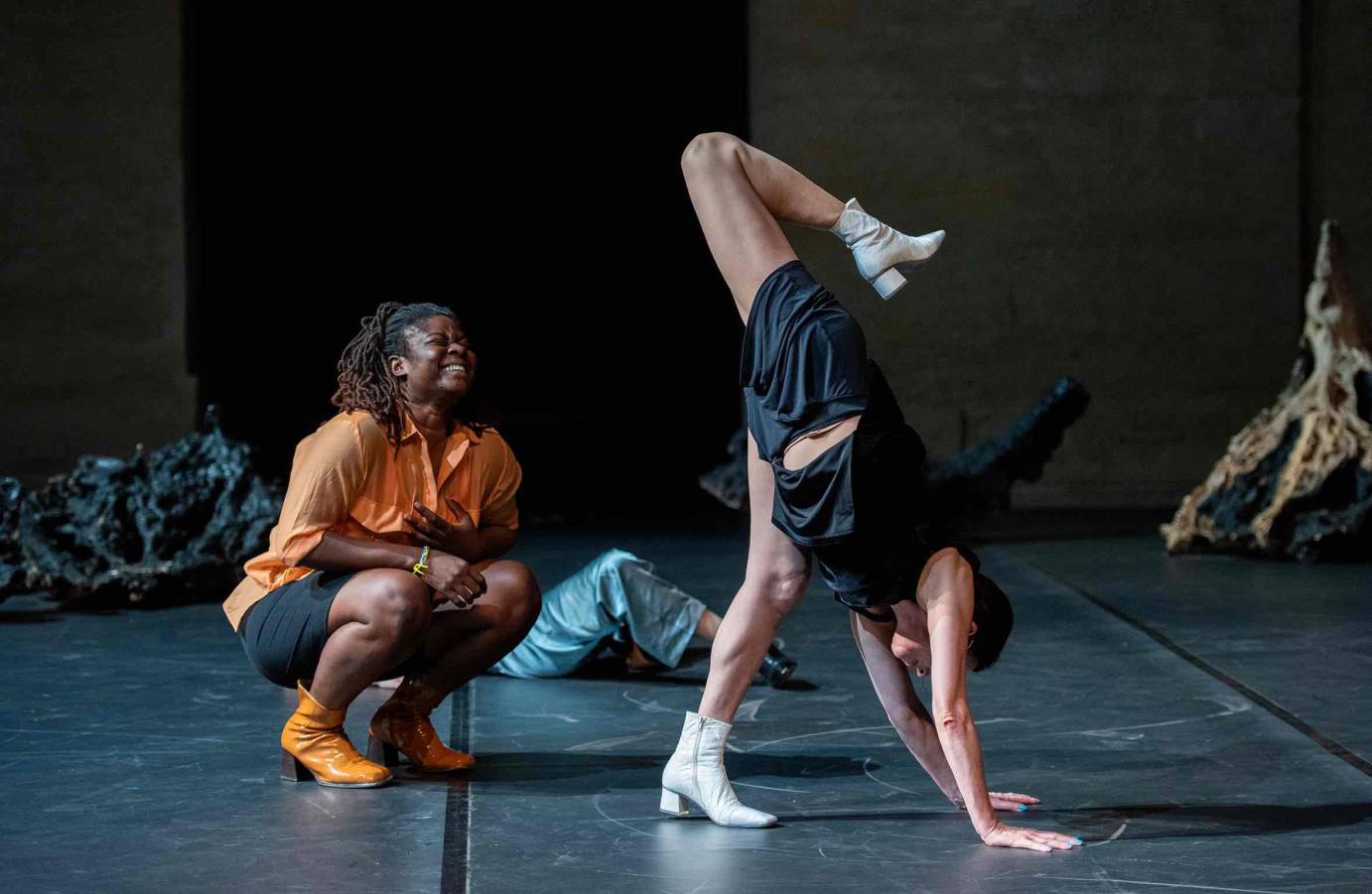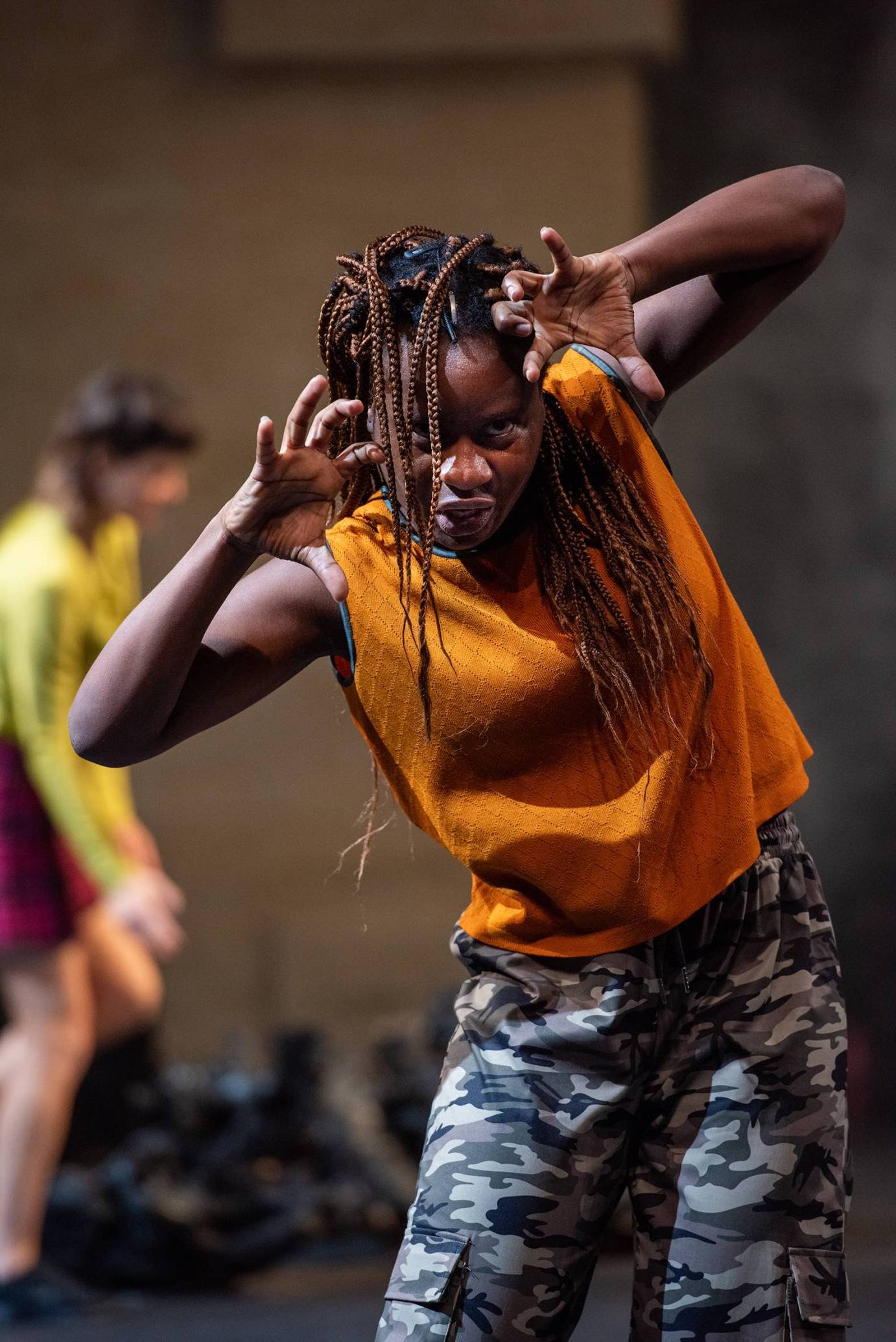IMPRESSIONS: Mathilde Monnier's "Black Lights" at Théâtre de la Cité International

Choreography and Direction: Mathilde Monnier
Dramaturge: Stéphane Bouquet
Scenery: Anne Tolleter with studio Martine Andrée and Paul Dubois
Lighting: Éric Wurtz
Sound: Olivier Renouf and Nicolas Houssin
Costumes: Laurence Alquier
Performers: Isabel Abreu, Aïda Ben Hassine, Kaïsha Essiane, Lucia Garcia Pulles, Mai-Júli Machado Nhapulo, Carolina Passos Sousa, Jone San Martin Astigarraga and Ophélie Ségala
Eight fierce and furious females took over stage of the Théâtre de la Cité International in Mathilde Monnier’s Black Lights, presented as part of the “Transforme Paris” festival initiated by the Hermès Foundation. This dance-theatre work brings the body to the fore, mixing words and movement in protest of the violence, degradation and objectification that women have endured simply by being female.

Monnier uses gesture and dance to enhance a diverse selection of monologues from the potent short film series H24: 24 Hours in the Life of a Woman conceived by Valérie Urrea and Nathalie Masduraud. Written by 24 women from across Europe, these texts are based on true stories that run the gamut, from yearning to shedding that ever-appeasing smile, and not forgetting the testimonies of bruises, broken teeth, or burnt skin.
Draping themselves around the stage lounge-style alongside charred chunks of wood that smoke throughout the production, the performers’ thighs are splayed open wide or snuggly crossed. Ophélie Ségala dances through this shifting backdrop as she tells us how she was required to wear four-inch heels in order to keep her job. The leg of one reclining performer extends straight up into the sky only to clomp down with a thud that hoists her hips high. This chorus of performers clonks from one position to another as if fallen, pushed or broken, belying their overall air of nonchalance. Tactics of exploitation and objectification are, unfortunately, the kind of thing women have become far too accustomed to.

The music pulses in an abstract soundscape. It strains romantic and pounds relentlessly. Each musical choice carries or comments on the action. There are moments of silence and of pristine simplicity. Words and movement highlight simple actions, like breathing in and out repeatedly, or rocking from left to right, left to right. These natural physical responses for managing stress and intense emotions are integrated smoothly and effectively into the work. So much so that a forgotten memory surfaces: Me racing out of a shop I worked in, in total panic. No coat, no money, no phone (cell phones were yet to be invented). It is winter and I am that crazy woman on the corner begging for a quarter to call my brother.
But there is no panic here. These women are strong, angry and rebellious. Shoulders are solid and braced, ready for a fight. The tone of their bodies and voices is the same, like many in my mother’s generation, mastering the aggressiveness they have been confronted with too well. Smoke from the burning tree trunks hovers at heart level as these women strut long-legged through space. But it is clear they are also falling from one step to the next.

One dancer wearing a light blue shirt, Carolina Passos Sousa, has stunning precision and simplicity, while the driving passion of the red-skirted Lucia Garcia Pulles revs just beneath the surface. Aïda Ben Hassine, in pink satin, stands out in a sequence full of speed and fluid agility. Mai-Júli Machado Nhapulo, in army camouflage pants, knocks, hard, on the imaginary wall that separates us from the performers. She repeats this again and again, her arm, hand and torso fully committed to shaking us awake. And she does! Machado Nhapulo is a powerhouse of a performer. Her moment here aligns most with my own lived experience. It is this image that is imprinted now in my memory, and in my body.
A mix of dancers and actresses, you cannot hardly tell which is which. They all move with conviction and authority. Elbows pull torsos into strong spirals, legs lunge sideways, shoulders caress hands. Each performer is distinct, and each has their moment in the spotlight, yet the group is ever-present as witness and support to one another.

For me, there are far too many words. And the piece does not really go anywhere — though I doubt it was intended to. Because of this, however, the work feels too long. Nevertheless, the last section is fascinating to watch as dancers fight and flail with the air, driven by the endless thumping of club music. What makes it possible for some of the performers to keep the relentless movement alive, while others run out of steam or begin to limit the range of movement?
Two of them, Machado Nhapulo and Garcia Pulles, let their heads go and allow the body to carry them. In these two dancing bodies breath, muscle and bone become pure physical expression, and their dance shifts into a trance-like state where any limitations of the body are transcended.














